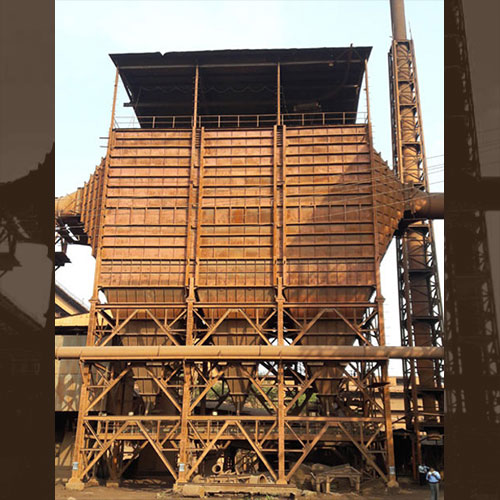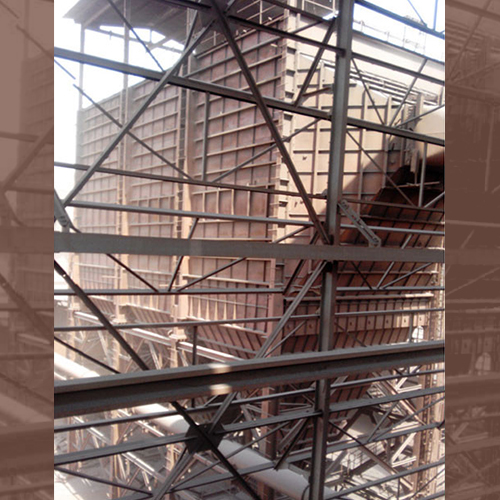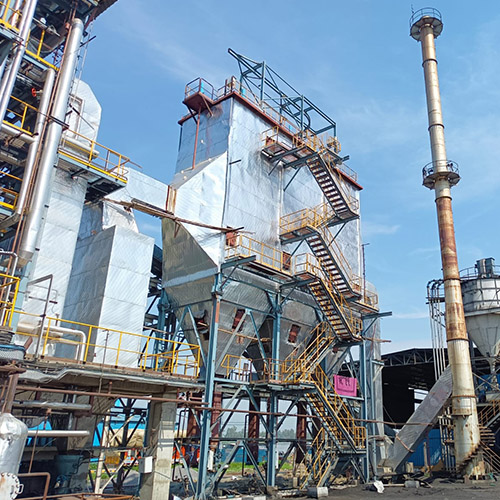ESP Electrostatic Precipitator Manufacturers & Suppliers In India


An Electrostatic Precipitator (ESP), also known as an electrostatic air cleaner, is an air pollution control device used to remove particulate matter (such as dust, smoke, and fine particles) from industrial exhaust gases or emissions. ESPs use electrostatic forces to capture and collect particulates from the gas stream. They are widely used in various industries to improve air quality and comply with environmental regulations. Here's a description of the key components and operation of an ESP:
Components of an Electrostatic Precipitator:
- Housing: The ESP is typically housed in a large container or casing that provides structural support and houses the various components of the system.
- Charging Electrodes (Collectors or Discharge Electrodes): These high-voltage electrodes are evenly distributed along the length of the ESP. They emit a corona discharge, creating a strong electric field that charges the particulate matter in the gas stream.
- Collection Plates (Collecting Electrodes): These are grounded plates or surfaces located downstream from the charging electrodes. The charged particulate matter is attracted to the collection plates by the electrostatic force and adheres to their surfaces.
- Rapping Mechanism: Many ESPs are equipped with a rapping or vibrating mechanism that periodically shakes or vibrates the collection plates to dislodge the collected particulate matter, allowing it to fall into a hopper for disposal.
- Hopper: The bottom of the ESP houses a hopper or collection chamber where the dislodged particulate matter falls and is collected for disposal or recycling.
Operation of an Electrostatic Precipitator:
- Gas Inlet: Polluted air or gas containing particulate matter enters the ESP through an inlet duct.
- Charging of Particulates: As the gas stream passes through the charging electrodes, the particulate matter in the gas stream becomes electrically charged through a process called corona discharge. This charging makes the particles responsive to the electrostatic force.
- Particle Collection: The charged particles are then attracted to and collected on the grounded collection plates. The electrostatic force between the charged particles and the collection plates is strong, causing the particles to adhere to the plates.
- Cleaning Process: To maintain filter efficiency, ESPs often incorporate a rapping mechanism that periodically dislodges the accumulated dust from the collection plates. This dust falls into the hopper for disposal or recycling.
Benefits of Electrostatic Precipitators:
- High Efficiency: ESPs are highly efficient at capturing fine particulate matter and are particularly effective for submicron-sized particles.
- Low Pressure Drop: They typically have a low pressure drop, which minimizes energy consumption in the gas-handling system.
- Versatility: ESPs can be used in various industrial applications to control dust emissions and particulate matter.
- Economical: ESPs offer cost-effective solutions for air pollution control, given their efficient operation and relatively low maintenance requirements.
- Scalability: ESPs can be easily scaled up or down to meet specific industrial needs.
Electrostatic precipitators are commonly used in industries such as power generation, cement manufacturing, pulp and paper production, metallurgy, and various manufacturing processes where the control of particulate emissions is critical for environmental compliance and workplace safety.
Industrial application for ESP
Electrostatic Precipitators (ESPs) are widely used in various industrial applications to control particulate emissions and improve air quality. They are particularly effective at capturing fine particulate matter and are commonly found in the following industries:

